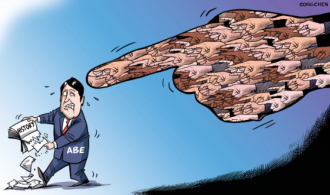Yellow metal set to regain its glitter in topsy-turvy market
By Huang Xiangyang (China Daily) Updated: 2016-01-12 13:55More important, gold is getting scarce. At the current production rate of about 3,000 metric tons per year, known global gold reserves are expected to be depleted in 20 years, according to the US Geological Survey in 2014.
On the flip side, demand for gold is increasing, from the jewelry, investment and high-tech sectors. According to the WGC, growth in demand for gold in China, the biggest producer and consumer - already in high double-digits - will continue to rise in the next five years.
For thousands of years, gold has served as a means to protect wealth. Its value lies in its intrinsic properties that have not changed. It is durable, and never loses its luster.
Common sense is all I need to assert that gold at current level is undervalued.
Over the past 35 years, the price of almost everything - from goods to services - has skyrocketed, thanks to the country's ever-expanding economic size and the monetary supply that fuels it.
As I can recall, the average price of public transport has surged by at least 10 times, a hair cut 30 times, and a bowl of beef noodles 40 times. We in general don't feel the pinch given that average incomes have risen even higher.
But look at gold - a meager 25 percent rise in value from the level seen in 1980. Even though its price then stood at an all time high of $850, given that money supply has ballooned - by hundreds of times in China and at least six times in the US - gold at the current level is really a bargain.
The gold price has yet to see the light at the end of tunnel. But a golden rule of the market is to "buy low".
If winter comes, can spring be far behind?
Contact the writer at huangxiangyang@chinadaily.com.cn

Charlotte and Emilie Meaud, twin sisters, were killed at the terrace of the Carillon, during the attacks on Paris, on the 13th of November.










